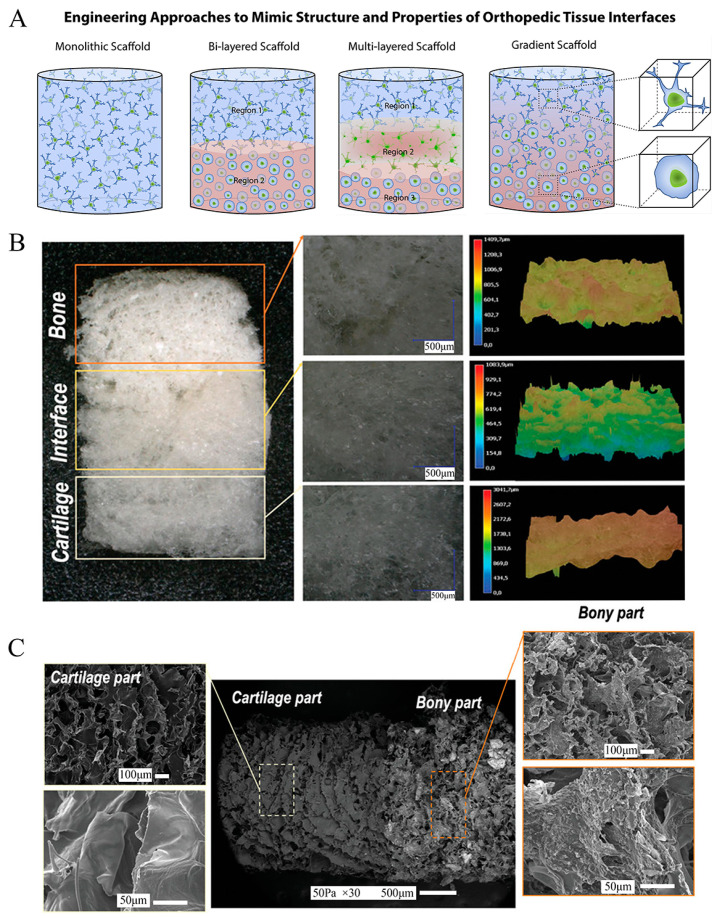Figure 2.
Schematic and representative examples of the design of tissue-engineered osteochondral scaffolds. (A) Classification of scaffold strategies based on the number of layers and gradient properties of the designs: Monophasic scaffolds are formed with a single homogeneous layer (left). Discrete gradient constructions include bi-layered (two layers) or multiphase (three or more layers). In the latter, each layer represents a specific region of the OC unit. The continuous gradient scaffolds (right) have a gradual transition between regions which better simulates the original characteristics of the joint. Reproduced with permission from Ref. [95]. Copyright 2016, Elsevier. (B) Digital light microscopy images showing the different zones in the multiphase scaffold. Reproduced with permission from Ref. [96]. Copyright 2021, Wiley. (C) SEM images illustrating the microstructure and morphological features of the biomimetic scaffold [96].

